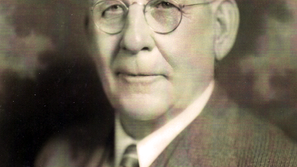Opinion: California, left behind, again
- Jim Glynn
- Nov 14, 2020
- 4 min read
Hundreds of years from now, archaeologists may puzzle over a structure on SR-145. You can see the object somewhere around Avenue 15, just before you get to the railroad trestle. This section of the “California Stonehenge” was intended to be part of the high-speed rail (HSR) system for the state’s bullet train, which would have been the slowest and most expensive of the world’s high-speed transportation systems. Now, the project seems to be in Limbo; perhaps it’s dead but just doesn’t know it.
Over the years, I’ve written 15 of these columns in opposition to the boondoggle, usually referring to the bullet train as the Slo-Mo Choo-choo. In 2012, I felt that I was in step with our County Board of Supervisors who filed suit against the CA HSR. But, in 2013, the Board revisited the action and the seven-member Board was deadlocked at a 3-3 tie in regard to retracting its law suit. The tie was broken by Supervisor Manuel Nevarez who voted to drop the suit. But, here’s the thing. Nevarez was never elected to the Board; he was appointed by then-Governor Jerry Brown to replace Frank Bigelow, who was elected to the state Assembly. The project, which — I suppose — was to be Brown’s legacy, at that time was projected to cost $69 billion. Nevarez left the Board the following year, choosing not to run for election.
That same year, Elon Musk, CEO of Tesla and Space X, proposed an alternative to HSR, namely a hyperloop. This system would send pods through a tube, similar to the system used to make transactions at the drive-up station at your bank. Musk calculated that the hyperloop, traveling in a vacuum and moved along by magnetic levitation, would transport people at 600 mph. The tube, running along Interstate 5 between the Bay Area and San Francisco, would cost about $6 billion, in 2013 dollars. An estimate made in February 2020 by the California High-Speed Rail Authority claims that the HSR project, if it were to continue, would now cost $80.3 billion. If the hyperloop project increased by the same percentage, it would now cost about $7 billion.
Over the next few years, there were numerous demonstrations of hyperloop transportation. There was even a plan for the construction of a closed system to service a new community here in the Central Valley. Quay Valley, a proposed real estate development, announced in 2015 that it was partnering with Hyperloop Transportation Technologies to ring a new community near I-5 in Kings County. However, financing for the project never materialized. And talk of a hyperloop for California was suspended.
On Nov. 8, 2020, Virgin Hyperloop announced that the first human passengers rode in a hyperloop pod along a test track in the desert near Las Vegas. Josh Giegel and Sara Luchian, two of the company’s executives, sat in their vegan leather seats and were transferred into an airlock as the air inside the vacuum tube was removed. The pod is designed in such a way that it will be familiar to passengers. According the The Verge, Luchian said, “This is something that reminds me of a place that I’ve been and I’ve used many times, that I would feel comfortable putting grandma in and sending her on a visit somewhere.”
After the successful test in Nevada, the company announced that it will build a $500 million certification center in West Virginia where it will work on meeting government safety standards.
Virgin Hyperloop has a preliminary agreement to build the Mumbai-Pune Hyperloop in India and another between Jeddah and Riyadh in Saudi Arabia. It is in partnership with the University of Missouri and an engineering firm to investigate the feasibility of a Missouri Hyperloop, and is planning a route connecting Chicago; Columbus, Ohio; and Pittsburgh.
Hyperloop Transportation Technologies is working on feasibility projects in Abu Dhabi and a cargo-moving system for Hamburg, Germany. Hardt Hyperloop is working on similar projects for airports in Holland, France, Belgium, and Britain. Other feasibility studies are being conducted in Finland, Ukraine, China, and India.
TransPod, a Canadian company, is also working on the development of a hyperloop system and has opened offices in Toronto; Toulouse, France; and Bari, Italy. It currently has plans for a test track near the town of Droux in collaboration with the French department of Haute-Vienne.
DGWHyperloop has an initial proposal for a corridor between Delhi and Mumbai. Other companies are investigating the possibility of hyperloop systems for Holland and Poland.
It seems that while the rest of the world is at least thinking about this new technology that was introduced in California, our state is busy ripping up SR-99 (and other highways) and continuing to get useless reports from the High-Speed Rail Authority. Whatever happened to the vision that once made our state the envy of the planet?
Our highways were once the best in the world; our Master Plan for Higher Education was studied by virtually every other country; Silicon Valley was the birthplace of digital technology and the application of artificial intelligence. Now, we’re probably best known for our high taxes, ridiculous cost of housing, widespread poverty, growing number of homeless people, and new laws that make no sense.
The Bureau of the Census shows that 691,145 Californians left the state last year, the largest loss nationally. We’re losing businesses, as well. But, when the 2020 census is completed, it will show that we have a population of more than 40 million people. Those people need an innovative mode of transportation. Dare I suggest hyperloop?
• • •
Jim Glynn is Professor Emeritus of Sociology who bids a sad goodbye to Alex Trebek, host of Jeopardy!, who died on Nov. 8. Jim may be contacted at j_glynn@att.net.


























Comments